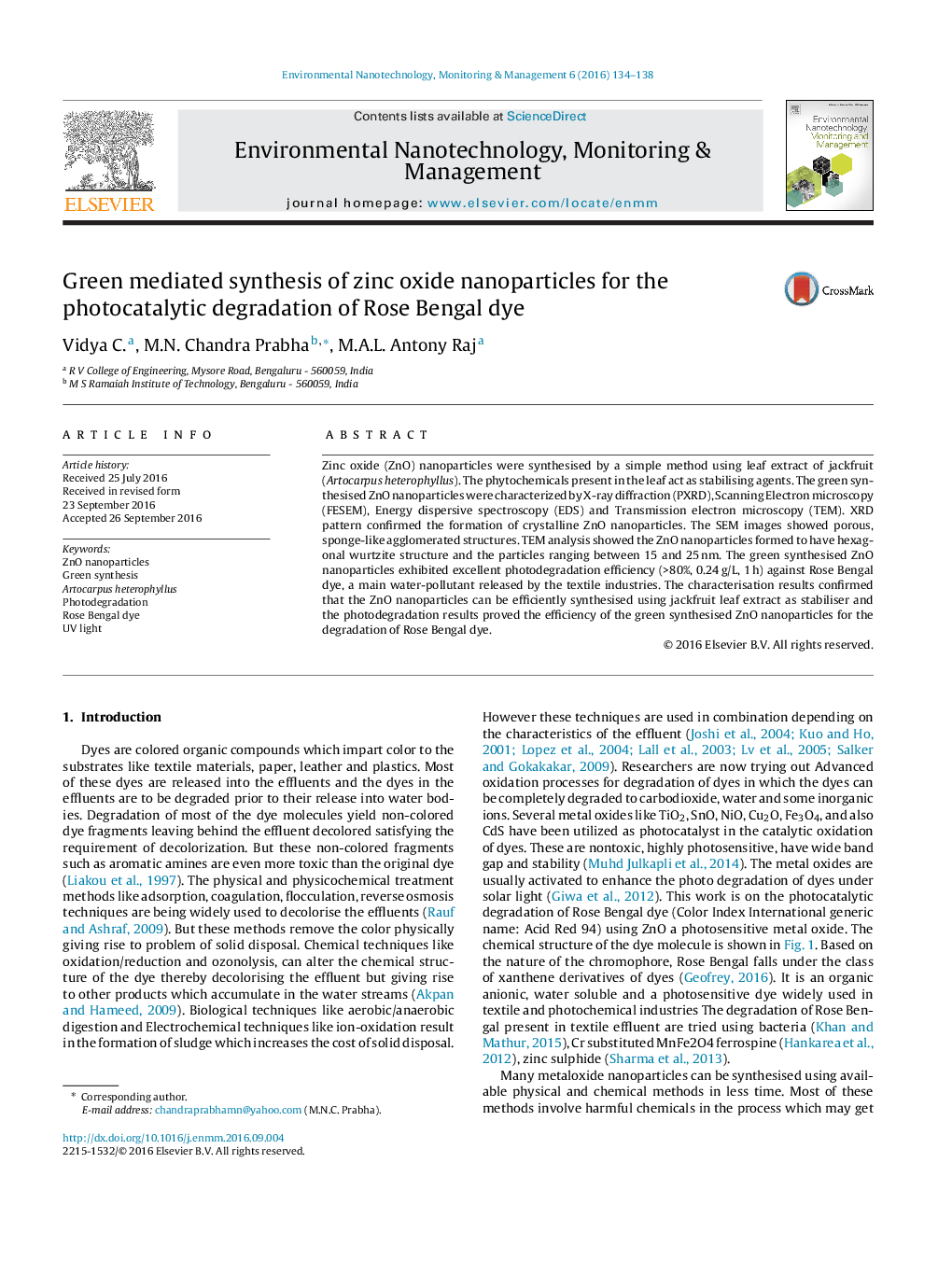| Article ID | Journal | Published Year | Pages | File Type |
|---|---|---|---|---|
| 4424195 | Environmental Nanotechnology, Monitoring & Management | 2016 | 5 Pages |
•Artocarpus heterophyllus leaf extract proved to have potential phytoconstituents for green mediated synthesis of Zno nanoparticles.•The particles were found to be in the size ranging beteween 15 and 25 nm.•The synthesised ZnO nanoparticles were highly potential towards photocatalytic degradation of Rose Bengal dye (>80%, 0.24 g/L, 1 hour) under UV light.
Zinc oxide (ZnO) nanoparticles were synthesised by a simple method using leaf extract of jackfruit (Artocarpus heterophyllus). The phytochemicals present in the leaf act as stabilising agents. The green synthesised ZnO nanoparticles were characterized by X-ray diffraction (PXRD), Scanning Electron microscopy (FESEM), Energy dispersive spectroscopy (EDS) and Transmission electron microscopy (TEM). XRD pattern confirmed the formation of crystalline ZnO nanoparticles. The SEM images showed porous, sponge-like agglomerated structures. TEM analysis showed the ZnO nanoparticles formed to have hexagonal wurtzite structure and the particles ranging between 15 and 25 nm. The green synthesised ZnO nanoparticles exhibited excellent photodegradation efficiency (>80%, 0.24 g/L, 1 h) against Rose Bengal dye, a main water-pollutant released by the textile industries. The characterisation results confirmed that the ZnO nanoparticles can be efficiently synthesised using jackfruit leaf extract as stabiliser and the photodegradation results proved the efficiency of the green synthesised ZnO nanoparticles for the degradation of Rose Bengal dye.
